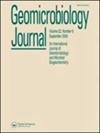Environmental Parameters Determine the Structure of Soil Bacteria under Different Land use Types in Tailings Area
IF 2.2
4区 环境科学与生态学
Q3 ENVIRONMENTAL SCIENCES
引用次数: 1
Abstract
Abstract Soil microorganisms contribute substantially to a wide range of services and thereby improve recovery in ecosystem restoration. However, there is relatively limited information on how microbial communities respond to different land-use types with similar plant species and their potential roles in supporting soil restoration in mine tailings. To understand the importance of the response of soil microbial communities to the stress of tailings area in different soil habitats, this article selected three different land use types (Tailings area, Buffer zone and Vegetable field) as the variables in the Yanzibian tailings area in Ningqiang, Shaanxi Province, China. Soil physicochemical properties and heavy metal concentrations of the different land use types were compared. Illumina MiSeq. 2500 Sequencing Technology was used to analyze the abundance and structural diversity of the microbial community in soil samples. The results showed that most of the soil samples were unsafe with multiple metals. All soil samples in the buffer zone and tailings ponds were acidic. With the acidity decreased, bacterial community richness and diversity increased significantly. Briefly, different environmental factors and soil microbial communities were significantly distinct across different land-use types. Cu, Zn, Pb, pH, MC (Moisture content), TN (Total nitrogen), TP (Total phosphorus), and TK (Total potassium) were essential factors affecting the abundance and structural diversity of soil microbial communities across three different land-use types. As a result, Actinobacteria, Alphaproteobacteria, and Gammaproteobacteria were the top dominant classes in the buffer zone and Vegetable field soils, while Sulfobacillia dominated in tailings pond soils. Further, we found that with the continuous decline of the pH, the dominant genera transferred from norank_f__norank_o__Vicinamibacterales, Bacillus and Nocardioides to the norank_f__norank_o__Gaiellales and norank_f__norank_o__Acidobacteriales, then to Sulfobacillus. These confirmed that the responses of microbiota to heavy metals stress varied in different land-use types. Together, this study provides important information on the occurrence and distribution of soil microbiomes in tailings areas and their potentially beneficial roles in soil restoration.环境参数决定尾矿区不同土地利用方式下土壤细菌结构
土壤微生物在生态系统恢复中具有广泛的服务功能,从而促进生态系统的恢复。然而,关于微生物群落对不同土地利用类型和相似植物种类的响应及其在支持尾矿土壤修复中的潜在作用的信息相对有限。为了解不同土壤生境下尾矿区土壤微生物群落对胁迫响应的重要性,以陕西省宁强延子边尾矿区为研究对象,选取尾矿区、缓冲区和菜地3种不同土地利用类型作为变量。比较了不同土地利用类型土壤理化性质和重金属浓度。Illumina公司MiSeq。采用2500测序技术分析土壤样品中微生物群落的丰度和结构多样性。结果表明,大部分土壤样品存在多种金属不安全。缓冲带和尾矿库土壤样品均呈酸性。随着酸度的降低,细菌群落丰富度和多样性显著增加。不同土地利用类型的环境因子和土壤微生物群落差异显著。Cu、Zn、Pb、pH、MC(含水率)、TN(全氮)、TP(全磷)和TK(全钾)是影响3种不同土地利用类型土壤微生物群落丰度和结构多样性的重要因子。结果表明,放线菌属、α变形菌属和γ变形菌属是缓冲区和菜地土壤的优势菌类,而硫杆菌属在尾矿库土壤中占主导地位。进一步发现,随着pH的持续下降,优势菌属由norank_f_norank_o_vicinamibacterales、Bacillus和Nocardioides向norank_f_norank_o_gaiellales和norank_f_norank_o_acidobacteriales转移,再向sulobacillus转移。这证实了不同土地利用类型土壤微生物群对重金属胁迫的响应存在差异。总之,该研究为尾矿区土壤微生物群的发生和分布及其在土壤修复中的潜在有益作用提供了重要信息。
本文章由计算机程序翻译,如有差异,请以英文原文为准。
求助全文
约1分钟内获得全文
求助全文
来源期刊

Geomicrobiology Journal
环境科学-地球科学综合
CiteScore
4.80
自引率
8.70%
发文量
70
审稿时长
3.3 months
期刊介绍:
Geomicrobiology Journal is a unified vehicle for research and review articles in geomicrobiology and microbial biogeochemistry. One or two special issues devoted to specific geomicrobiological topics are published each year. General articles deal with microbial transformations of geologically important minerals and elements, including those that occur in marine and freshwater environments, soils, mineral deposits and rock formations, and the environmental biogeochemical impact of these transformations. In this context, the functions of Bacteria and Archaea, yeasts, filamentous fungi, micro-algae, protists, and their viruses as geochemical agents are examined.
Articles may stress the nature of specific geologically important microorganisms and their activities, or the environmental and geological consequences of geomicrobiological activity.
The Journal covers an array of topics such as:
microbial weathering;
microbial roles in the formation and degradation of specific minerals;
mineralization of organic matter;
petroleum microbiology;
subsurface microbiology;
biofilm form and function, and other interfacial phenomena of geological importance;
biogeochemical cycling of elements;
isotopic fractionation;
paleomicrobiology.
Applied topics such as bioleaching microbiology, geomicrobiological prospecting, and groundwater pollution microbiology are addressed. New methods and techniques applied in geomicrobiological studies are also considered.
 求助内容:
求助内容: 应助结果提醒方式:
应助结果提醒方式:


